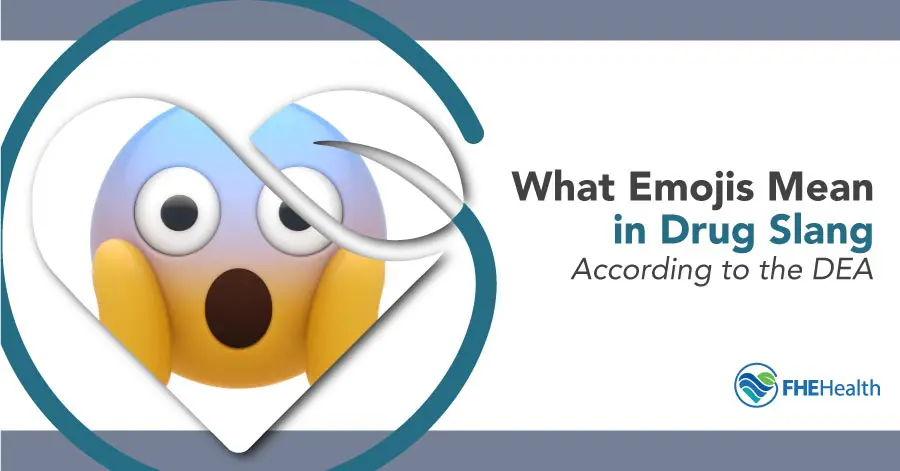

Parents are always looking for signs that their children are falling in with the wrong crowd or getting into trouble. However, in the modern world, it can be challenging to understand everything children (especially teenagers) are saying or doing when slang and texting languages are constantly evolving.
The latest investigation into how teens and young adults are speaking? How these younger age groups (and potentially some older individuals) are using an emoji drug code to avoid raising suspicion about their potential habits. The Drug Enforcement Administration (DEA) recently released an infographic of drug emoji meanings that’s been met with mixed feelings by the public.

The DEA has been conducting an ongoing investigation into potential drug emoji symbols based on what they’ve found being used in previous cases. The infographic was designed for parents, grandparents, caregivers, teachers and anyone who regularly interacts with teenagers. The reception for this infographic is a little mixed. Most people seem to agree that the drug emoji meaning detailed in the infographic is relatively accurate. However, many also agree it feels a little silly to see an infographic from a bureaucracy trying to “decode” teen language.
Regardless of whether the infographic may seem a little silly, it’s important to understand that teens do use emojis to discuss drugs, alcohol and other activities they may not want their guardians to learn about. This only makes sense when emojis are often used to replace words, feelings, phrases, places and more in everyday teen text speech.
Do you recognize any of the emojis detailed by the DEA as something you’ve seen your teen or their friends using? If you do, do you think the DEA’s decoding is accurate?
The idea of using codes to describe drugs isn’t new. Codes have long been used for drugs to avoid raising suspicion or getting caught by law enforcement. An excellent example is all the “nicknames” or street names are often used today because they don’t elicit the same suspicion as someone using the actual drug’s name.
For example, cocaine is often referred to as “snow,” “dust” or “coke.” Marijuana is often referred to as “bud,” “trees” or “grass.” Even though most people understand these terms refer to illicit substances today, using these words in the right way (or code) doesn’t raise suspicion. Why? Because they’re words that can naturally come up in everyday conversations.
Some of the emojis used for specific prescription drugs aren’t immediately obvious (and the same goes for those used for illicit drugs). However, an emoji that looks like a yellow and red pill can be universally used for Percocet, Oxycodone, Xanax, or Adderall. Other emojis for specific prescription drugs include:
The universal sign for drugs is a red maple leaf. Other emojis you might see for illicit drugs include:
Emojis aren’t only being used to represent actual illicit substances. The DEA has also found certain emojis being used to describe drug-related situations or people, like dealers. Examples include:
Some of these symbols could be innocent if used alone. For example, a teenager who occasionally uses a chocolate bar emoji isn’t necessarily trying to score Xanax. A snowflake isn’t always a cocaine emoji, especially if used in winter. A red heart can just as easily be meant to show love as be a molly drug emoji.
However, your concern may be warranted if you notice your child using any of the symbols frequently or notice several drug emojis being used in the same texts. It’s important to consider in what context the emojis are being used and whether your teenager shows any signs of addiction. Signs of addiction in teenagers might include:
Are you seeing your teen or one of their friends use these terms and are becoming concerned they’re using drugs? The next step is to seek professional help in determining whether your loved one is battling drug addiction. FHE Health has years of experience helping youth and adults overcome drug addiction. Contact us today at (844) 299-0618 to learn more. One of our compassionate counselors is standing by to take your call 24/7, so we can help you or your teen get the help you need.
Chris Foy is a content manager and webmaster for FHE Health with years of experience in the addiction treatment industry. read more